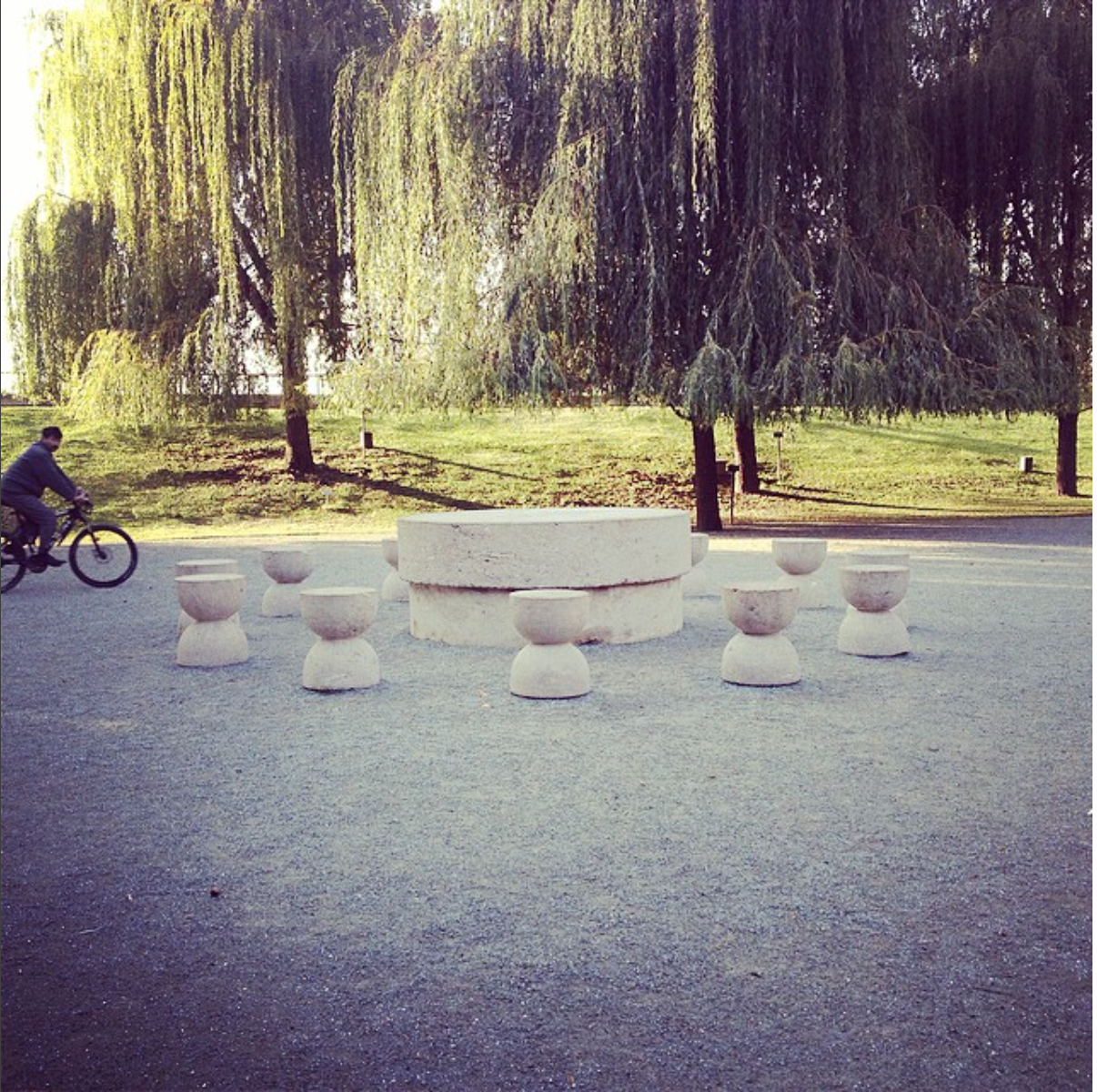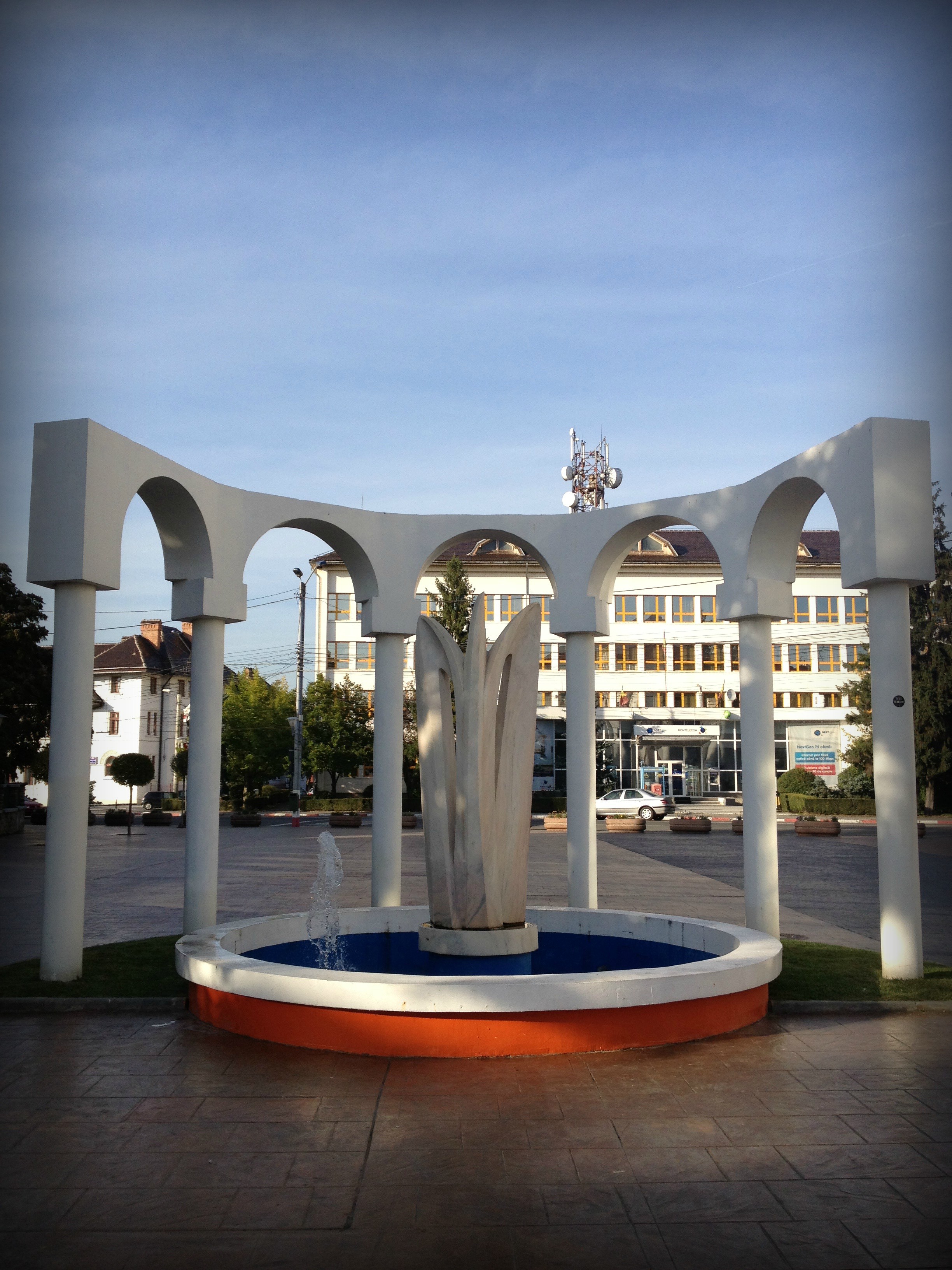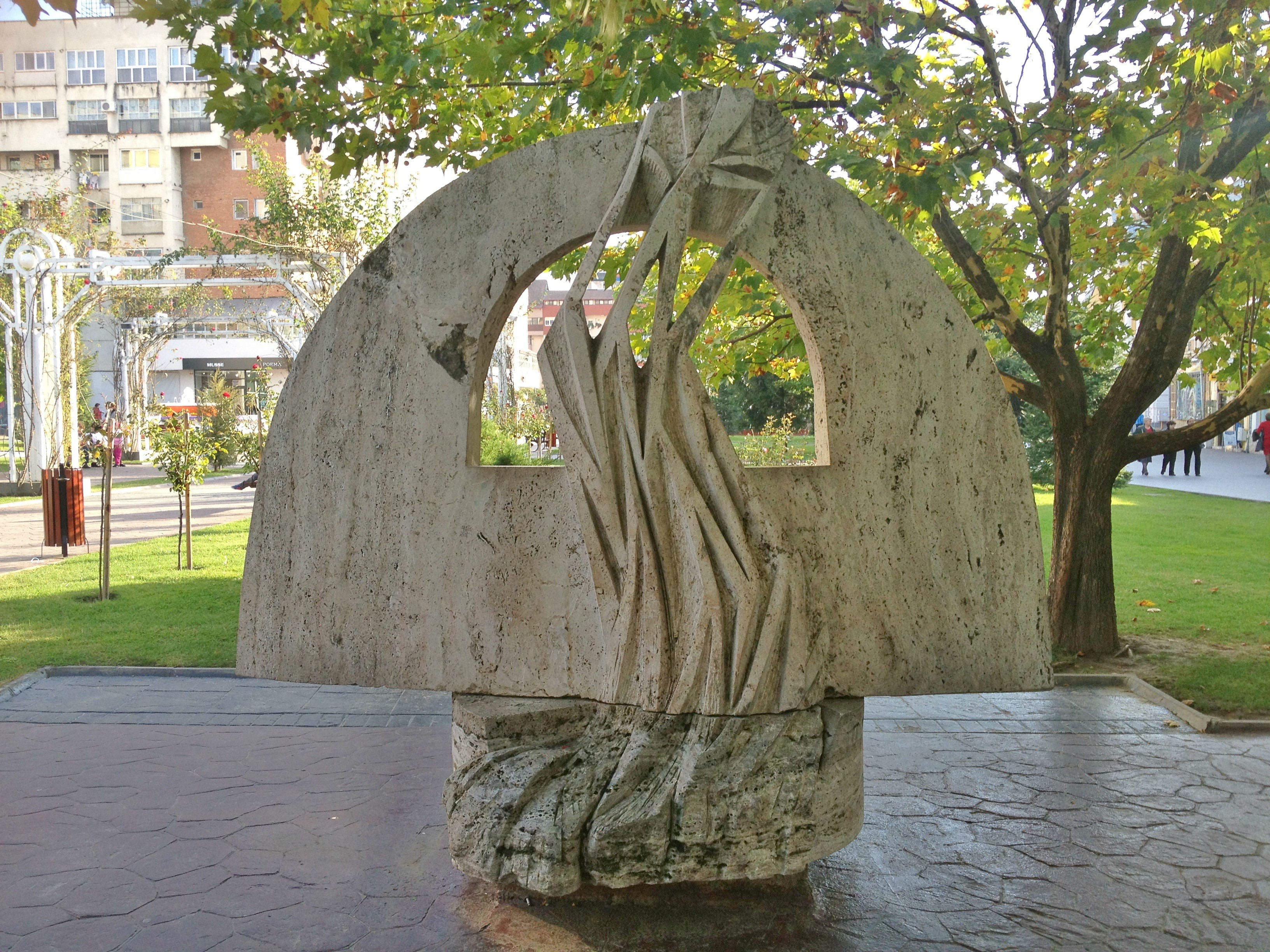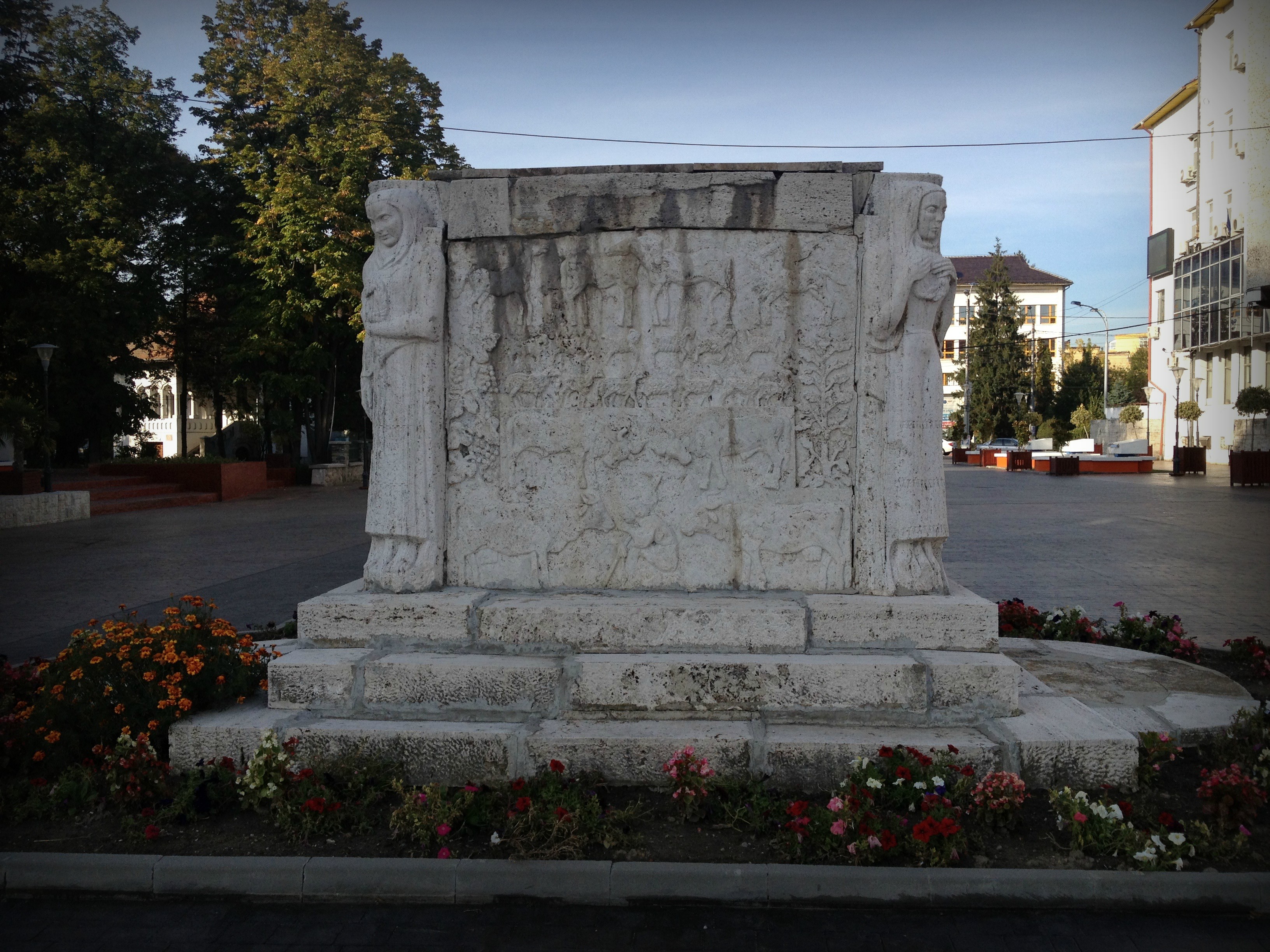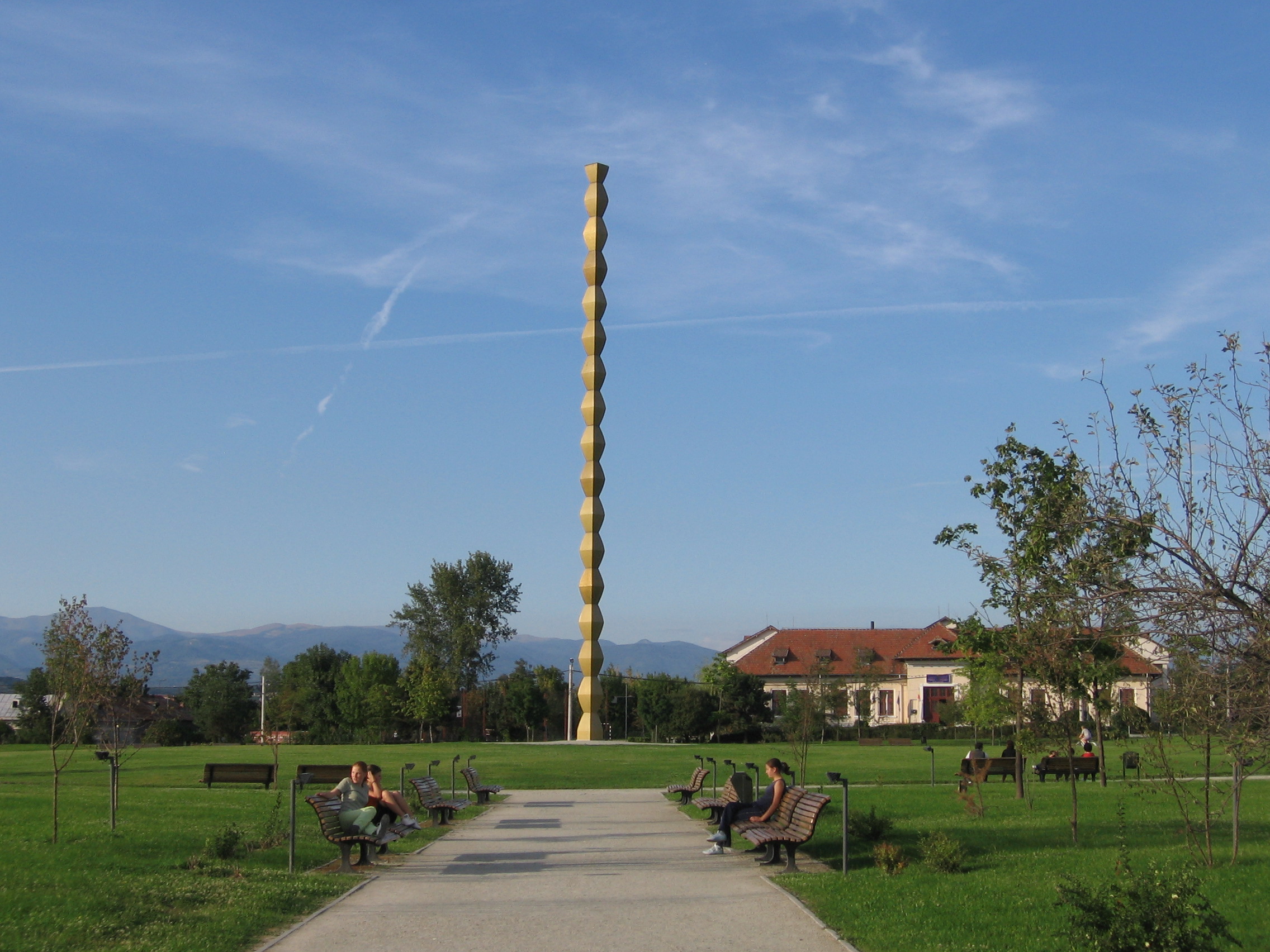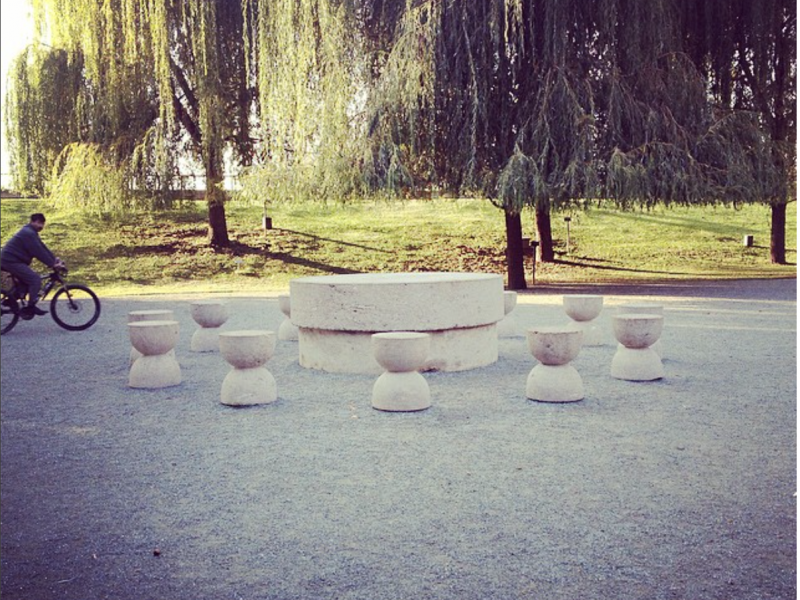
5 Photos
The Romanian government has launched a new crowdfunding campaign so the public can pitch in to purchase a sculpture by the country’s most famous artist. But critics say the artist’s memory is being manipulated by state authorities to promote a nationalist agenda that stretches back to the regime of Nicolae Ceausescu.
“The Wisdom of the Earth” is a sculpture of a woman carved from a slab of limestone lifted from the Paris Catacombs. It was created in 1908 by Romanian-born artist Constantin Brancusi, who’s been described as the most important modernist sculptor of the 20th century. In 1904, at the age of 27, Brancusi famously walked from his home in rural Romania to Paris on foot. The journey took 18 months. In France, the master woodcarver spent time with Ezra Pound and Auguste Rodin. “Work like a slave; command like a king; create like a god,” the sculptor was fond of saying. “The Wisdom of the Earth” was one of his early masterpieces.
Last month, the government of Romania launched the new fundraising campaign “Brancusi is mine”, calling on ordinary citizens to help buy Brancusi’s “The Wisdom of the Earth” from its private owners. The government has allocated five million euros for the purchase of the 11 million euro-sculpture and is seeking an additional six million euros in individual donations from the public to cover the rest.
In an effort to raise the remaining funds – of which just 138,000 euros has been collected to date — the government is attempting to streamline the donation process, by allowing Romanians to donate directly via SMS. The state television station, TVR, will also air special shows dedicated to the fundraising drive. The initiative’s website is already set up to receive donations, and would-be donors can wire money directly from their bank accounts to the Ministry of Culture. The campaign is set to last through September.
“The Wisdom of Earth” sculpture was first sold to Romanian art collector Gheorghe Romascu in 1911, and was confiscated by the communist authorities in 1957 — the same year Brancusi died and was buried in the Montparnasse Cemetary in Paris. A marathon court battle began shortly after the 1989 Romanian revolution; the sculpture was returned to Romascu’s elderly heirs in 2008. They placed it on sale in September 2014. It’s languished at the Cotroceni Art Museum in Bucharest ever since. The sculpture has the status of a “national treasure”, meaning the government has the right of refusal to block its sale to a foreign buyer, but has so far failed to take action to acquire the art on its own.

The “Brancusi is mine” initiative has reinvigorated hopes among some that the sculpture’s ownership status will finally be resolved, and that the piece will soon become the incontrovertible collective property of the Romanian nation.
But the new “high-tech” crowdfunding campaign to buy Brancusi’s famously primitive work has concealed just how contentious the legacy of the country’s best known artist still is in Romania today.
Many contemporary art critics reject the so-called “cult of Brancusi” and what they allege is its utilization to promote a nationalist or populist agenda. Art curator Ben Borthwick explained that “Brancusi has, to some extent, been appropriated by nationalist, conservative, reactionary interests.”
At last month’s inauguration of the “Brancusi is mine” campaign, Prime Minister Ciolos appealed to Romanians’ sense of national duty. “Visions, life and values separate us every day, but in the key moments, one can see the cohesion of a nation. As such, because I want Brancusi to gather us together, not to divide us, I call on Romanians to assume [our] values at the individual level.”
It’s this “Brancusian mythology” that Romanian artists like Alexandra Croitoru claim “either emerge[s] in concert with… or legitimate[s] nationalist ideology”.
The cult of Brancusi, of artist as national hero, predates the new populist campaign. And one of its more lurid manifestations was ushered in by the nationalist regime of Nicolae Ceausescu.
Ceausescu became General Secretary of the Romanian Communist Party in 1965. Nationalism quickly became one of the defining features of his leadership, replacing the Soviet orthodoxy of the Gheorghiu-Dej era. During the pre-Ceaucescu period, the most prominent art critic in Romania remarked that Brancusi had been infected with “the morbid tastes of bourgeois society” while in France, and the sculptor was barred from visiting Romania for the rest of his life. It was only in the 1960s, after Ceausescu came to power, that Brancusi was “rehabilitated”. The new nationalist-oriented communist authorities “recognized in [Brancusi] a great potential for favorable publicity.”
Plans to demolish Brancusi’s open air WWI war monuments in the city of Targu Jiu in the sub-Carpathian Mountains were scrapped. The artist, who had once scandalized Paris for showcasing a bronze sculpture of a phallus, became an unlikely icon of the conservative Ceausescu regime.

One of the purposes of Brancusi’s posthumous rehabilitation was to promote exclusionary Romanian nationalist policies that would undermine the status of the country’s minorities, particularly Hungarians. “The modern myth of Brancusi as heroic folk carver is to be understood within the context of Romanian nationalism…within the politics of the conflict of Hungarian (Magyar) and Romanian (Wallachian) land claims in the same Transylvanian basin,” Robin Peck wrote in his 2004 book Sculpture: A Journey to the Circumference of the Earth.
Following World War I, Hungary lost Transylvania to Romania under the 1920 Treaty of Trianon. Ceaucescu’s new constitution, drafted in 1965, emphasized a “unified, indivisible Romania”. And in 1968, the Ceausescu regime abolished the so-called “Magyar Autonomous Region” which had been established in the early 1950s in accordance with Marxist-Leninist dictates regarding the status of national minorities.
Timing is part of what makes the “Brancusi is Mine” campaign so compelling. Romania held local elections this past Sunday. The country’s Hungarian leadership was swift to declare the results “a major step forward in ethnic Hungarian political representation”, underscoring the significance disputes over territory still have in the country, however pacific their expressions. Romania will also hold parliamentary elections at the end of this year, shortly after the public campaign comes to a close.
The form of the government’s SMS-enabled “Brancusi is Mine” collective ownership initiative may be new, but its populist message seems to have passed through every ideological permutation in recent Romanian history. Meanwhile, the appreciation of Brancusi’s art, decoupled from political connotations, continues mostly outside of Romania.
Cover photos: The city of Targu Jiu, home to many outdoor sculptures by Brancusi, as well as sculptures by art students inspired by his style. Credit: Lily Lynch

